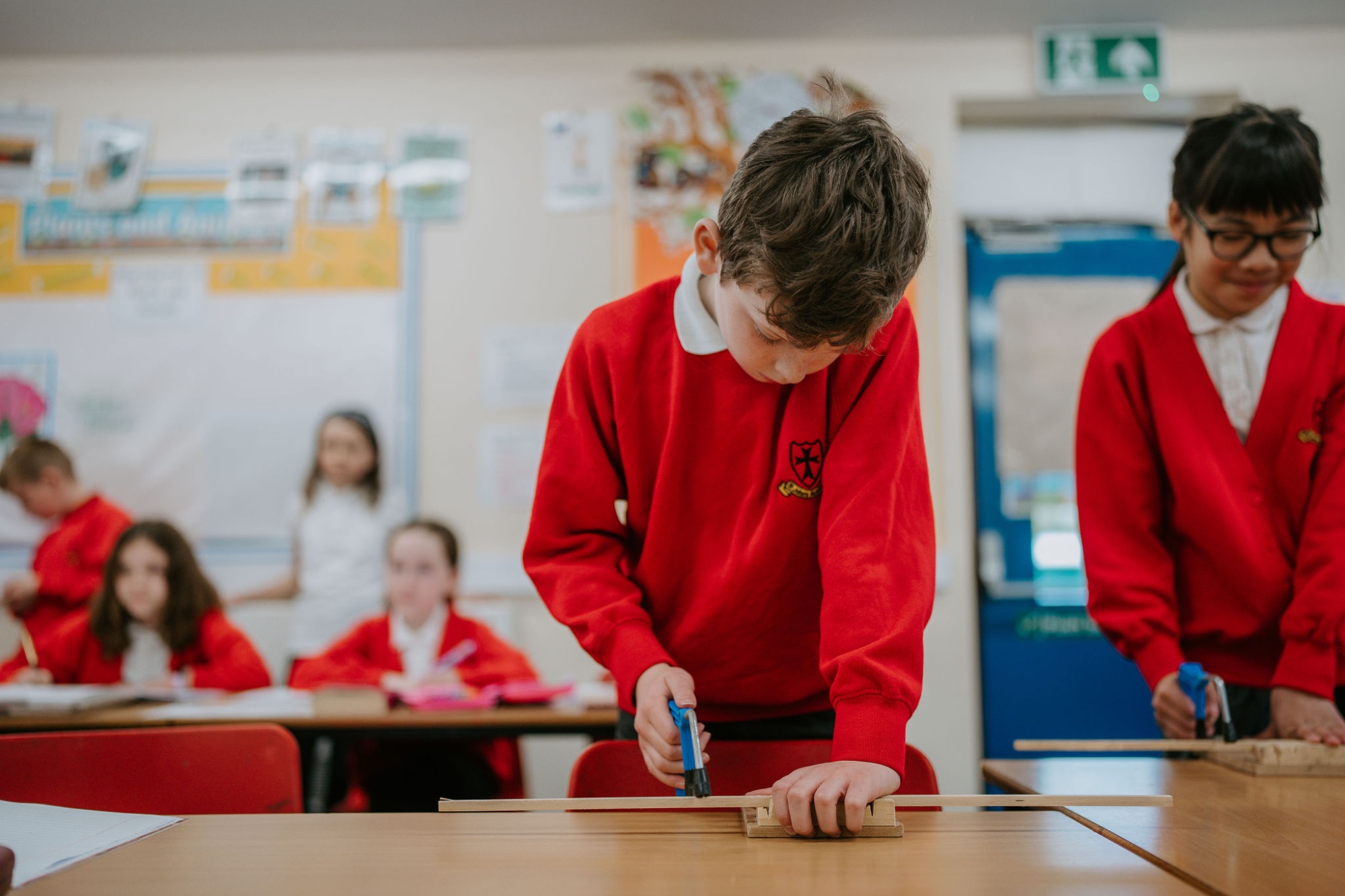Design and Technology
Design and Technology Curriculum Intent

-
Our Design and technology scheme of work aims to inspire pupils to be innovative and creative thinkers who have an appreciation for the product design cycle from the forming of ideas through to their creation and evaluation.
-
We want pupils to develop the confidence to take risks, through drafting design concepts, modelling, and testing and to be reflective learners who evaluate their work and the work of others.
-
Through our scheme of work, we aim to build an awareness of the impact of design and technology on our lives and encourage pupils to become resourceful, enterprising citizens who have the confidence and skills to participate in an increasingly technological world.
-
Our scheme of work enables pupils to meet the end of key stage attainment targets in the National Curriculum.
-
EYFS units provide opportunities for pupils to work towards the Development Matters statements and the Early Learning Goals.
Design and Technology Implementation
At our school, we follow the Kapow Primary Design & Technology Scheme.
-
Learning is sequential, showing a clear progression of skills and knowledge within the five National Curriculum strands across each year group:
-
Design
-
Make
-
Evaluate
-
Technical knowledge
-
Cooking and nutrition
It shows the skills and knowledge that are taught within each year group and how these skills develop to ensure that attainment targets are securely met by the end of each key stage.
-
Through Kapow Primary’s Design and technology scheme, pupils respond to design briefs and scenarios that require consideration of the needs of others, developing their skills in six key areas:
-
Mechanisms
-
Structures
-
Textiles
-
Food
-
Electrical systems (KS2)
-
Digital world (KS2).
-
These key areas follow the design process (design, make and evaluate) and have a particular theme and focus from the technical knowledge or cooking and nutrition section of the curriculum. Through the scheme, key areas are revisited again and again with increasing complexity, allowing pupils to revisit and build on their previous learning.
-
Lessons are engaging and appeal to those with a variety of learning styles, incorporating a range of teaching strategies from independent tasks, paired and group work- including practical hands-on, computer-based and inventive tasks.
-
Lessons are scaffolded as necessary in order that that they can be accessed by all pupils.
-
Depending on the Design & Technology project for that term, lessons may be developed over several weeks or blocked into a whole or part day, as appropriate.
-
Lessons embed the skills of reviewing, evaluating and improving.
-
Knowledge organisers for each unit support pupils in building a foundation of factual knowledge by encouraging recall of key facts and vocabulary.
-
Teacher subject knowledge is enhanced through teacher videos which are an integral part of Kapow’s lesson planning materials, ensuring that lessons delivered are of a high standard and ensure pupil progression.
Design and Technology Impact
-
Formative assessment informs teaching and learning
-
Pupils learning is assessed using a short summative exit quiz at the end of each unit.
-
Learning is monitored through book scrutiny and pupil voice.
-
Our pupils are confident in the design process and have an understanding of how to implement ideas into practice.
